Why Is Greek Art the Pinaacle of Art History
A shared linguistic communication, faith, and culture
Ancient Greece can feel strangely familiar. From the exploits ofAchilles and Odysseus , to the treatises of Aristotle, from the exacting measurements of the Parthenon (prototype to a higher place) to the rhythmic chaos of the Laocoön (paradigm below), ancient Greek civilization has shaped our world. Thanks largely to notable archaeological sites, well-known literary sources, and the impact of Hollywood (Clash of the Titans, for instance), this civilization is embedded in our collective consciousness—prompting visions of ballsy battles, erudite philosophers, gleaming white temples, and limbless nudes (we now know the sculptures—even the ones that decorated temples like the Parthenon—were brightly painted, and, of form, the fact that the figures are frequently missing limbs is the result of the ravages of fourth dimension).

Athanadoros, Hagesandros, and Polydoros of Rhodes, Laocoön and his Sons, early get-go century C.East., marble, vii'ten 1/2″ high (Vatican Museums; photo: Steven Zucker, CC BY-NC-SA 2.0)
Dispersed around the Mediterranean and divided into cocky-governing units called poleis or urban center-states, the aboriginal Greeks were united past a shared language, religion, and culture. Strengthening these bonds further were the so-chosen "Panhellenic" sanctuaries and festivals that embraced "all Greeks" and encouraged interaction, contest, and commutation (for example the Olympics, which were held at the Panhellenic sanctuary at Olympia). Although popular modern understanding of the aboriginal Greek world is based on the classical art of fifth century B.C.E. Athens, it is of import to recognize that Greek civilization was vast and did not develop overnight.
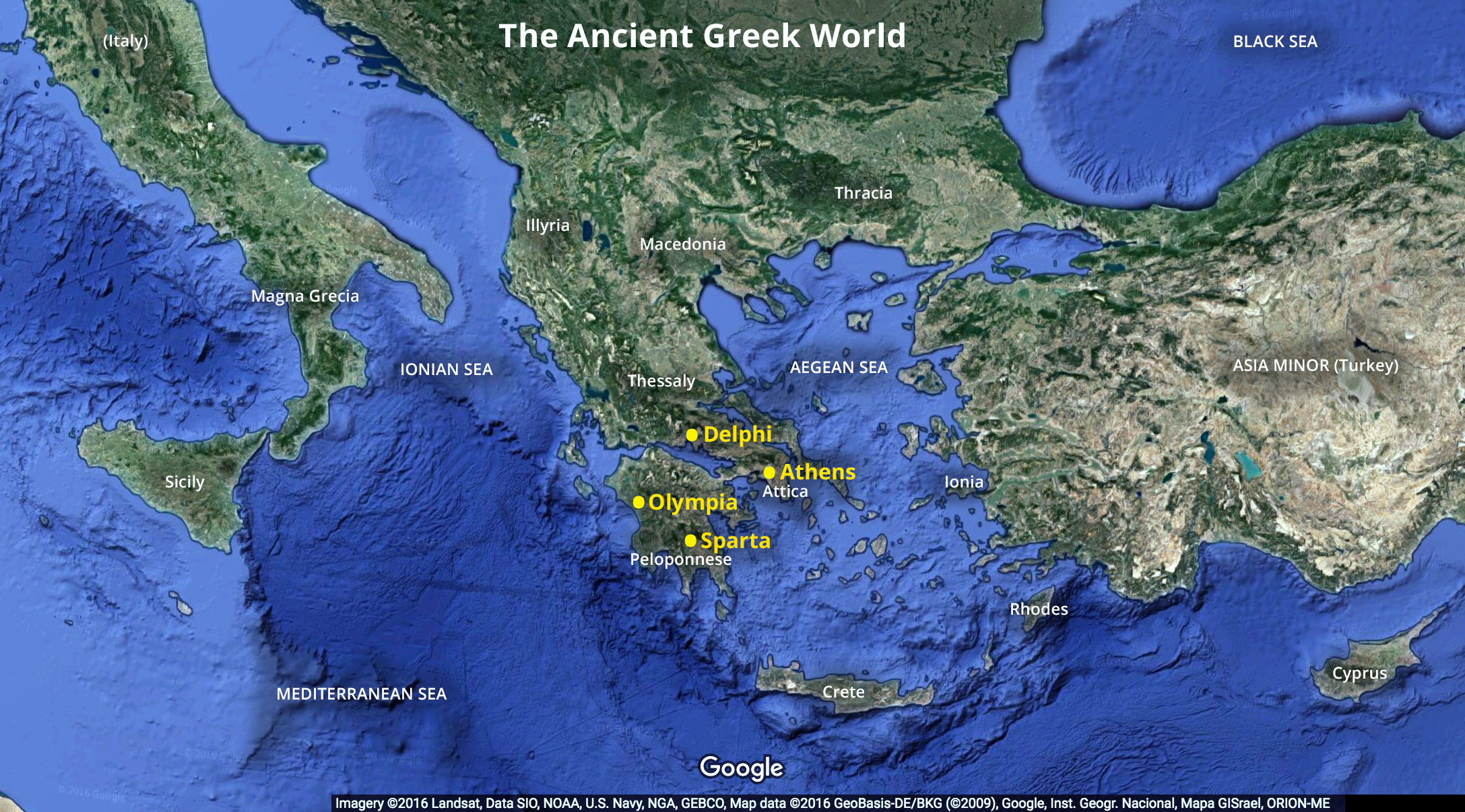
The Night Ages (c. 1100–c. 800 B.C.Due east.) to the Orientalizing Period (c. 700–600 B.C.E.)
Following the collapse of the Mycenaean citadels of the tardily Statuary Historic period, the Greek mainland was traditionally thought to enter a "Dark Age" that lasted from c. 1100 until c. 800 B.C.East. Not simply did the complex socio-cultural system of the Mycenaeans disappear, but also its numerous achievements (i.e., metalworking, large-scale construction, writing). The discovery and continuous digging of a site known as Lefkandi, however, drastically alters this impression. Located only north of Athens, Lefkandi has yielded an immense apsidal structure (almost fifty meters long), a massive network of graves, and ii heroic burials replete with gold objects and valuable horse sacrifices. One of the near interesting artifacts, ritually buried in 2 separate graves, is a centaur figurine (see photos below). At 14 inches high, the terracotta creature is equanimous of a equine (horse) torso made on a potter's wheel and mitt-formed homo limbs and features. Alluding to mythology and perhaps a particular story, this centaur embodies the cultural richness of this menstruum.
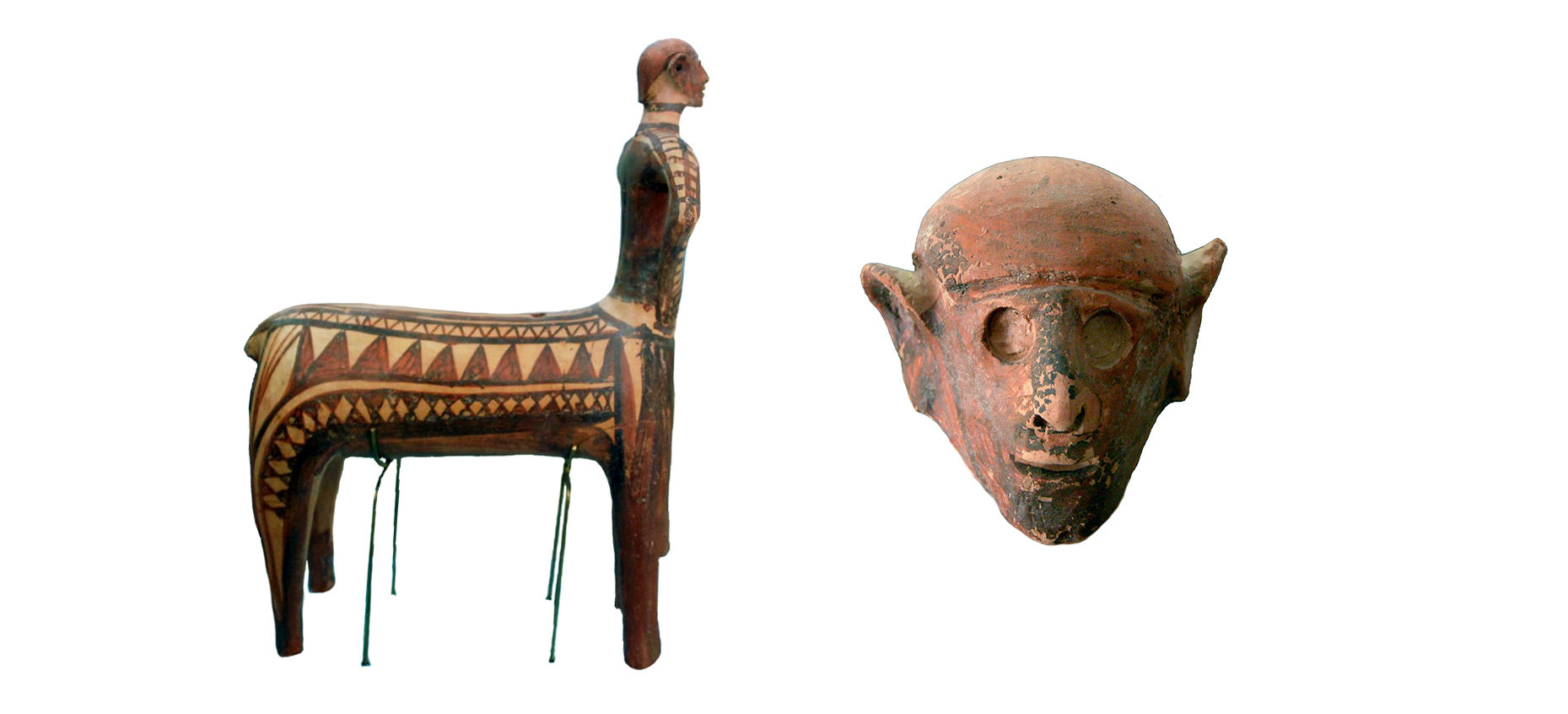
Centaur, c. 900 B.C.E. (Proto-Geometric menstruum), terracotta, 14 inches high, the head was found in tomb ane and the body was found in tomb 3 in the cemetery of Toumba, Lefkandi, Greece (detail of head photo: Dan Diffendale CC BY-NC-SA 2)
Similar in its adoption of narrative elements is a vase-painting likely from Thebes dating to c. 730 B.C.Eastward. (see prototype below). Fully ensconced in the Geometric Menses (c. 800–700 B.C.E.), the imagery on the vase reflects other 8th-century artifacts, such equally the Dipylon Amphora, with its geometric patterning and silhouetted human forms. Though simplistic, the overall scene on this vase seems to tape a story. A human being and woman stand beside a ship outfitted with tiers of rowers. Grasping at the stern and lifting one leg into the hull, the man turns dorsum towards the female person and takes her by the wrist. Is the couple Theseus and Ariadne? Is this an abduction? PerhapsParis and Helen? Or, is the human bidding farewell to the adult female and embarking on a journeying equally had Odysseus and Penelope? The answer is unattainable.

Late Geometric Attic spouted krater (vessel for mixing h2o and wine), maybe from Thebes, c. 730 B.C.E., 30.5 cm high (The British Museum, London), photo: Egisto Sani CC BY-NC-SA ii.0
In the Orientalizing Period (700–600 B.C.Due east.), alongside Near Eastern motifs and animal processions, craftsmen produced more nuanced figural forms and intelligible illustrations. For example, terracotta painted plaques from the Temple of Apollo at Thermon (c. 625 B.C.E.) are some of the earliest bear witness for architectural decoration in Iron Age Hellenic republic. Once ornamenting the surface of this Doric temple (most likely as metopes), the extant panels have preserved various imagery (watch this video to learn about the Doric guild). On 1 plaque (see image below), a male youth strides towards the right and carries a significant attribute under his right arm—the severed caput of the Gorgon Medusa (her face is visible between the right hand and correct hip of the striding figure). Not simply is the painter successful here in relaying a particular story, but as well the effigy of Perseus shows great advancement from the previous century. The limbs are fleshy, the facial features are recognizable, and the lid and winged boots appropriately equip the hero for fast travel.
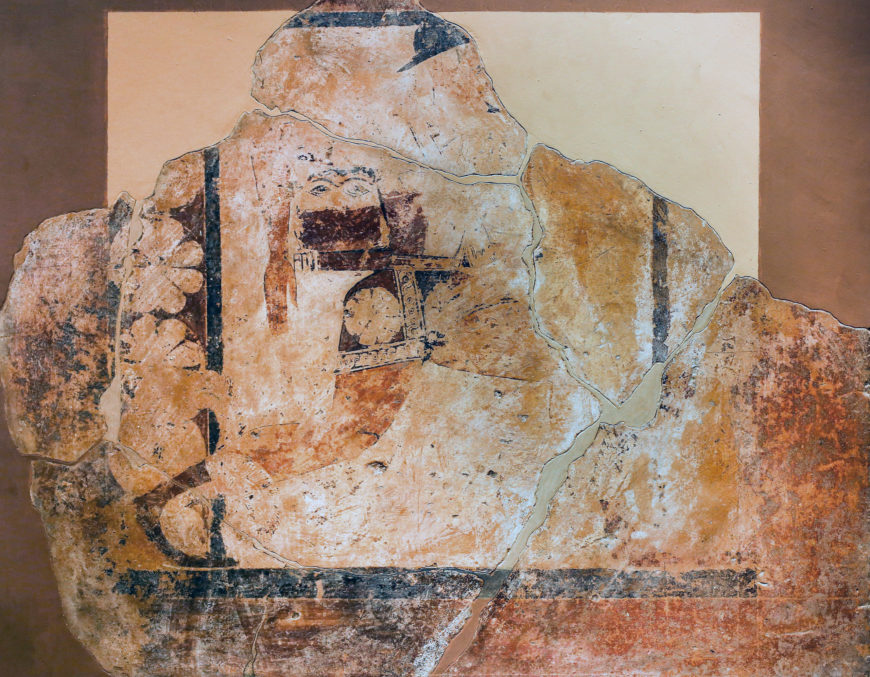
Fragment showing Perseus with the head of Medusa likely from a metope from the Temple of Apollo at Thermon, c. 630 B.C.E., painted terra cotta, 87.8 cm loftier (National Archaeological Museum, Athens; photograph: ArchaiOptix, CC By-SA four.0)
The Archaic Period (c. 600–480/479 B.C.E.)
While Greek artisans continued to develop their individual crafts, storytelling ability, and more than realistic portrayals of homo figures throughout the Archaic Menstruation, the metropolis of Athens witnessed the rise and fall of tyrants and the introduction of republic past the statesman Kleisthenes in the years 508 and 507 B.C.E.
Visually, the catamenia is known for large-scale marble kouros (male youth) and kore (female youth) sculptures (come across below). Showing the influence of ancient Egyptian sculpture (like this example of the Pharaoh Menkaure and his wife in the MFA, Boston), the kouros stands rigidly with both arms extended at the side and one leg advanced. Ofttimes employed as grave markers, these sculptural types displayed unabashed nudity, highlighting their complicated hairstyles and bathetic musculature (below left). The kore, on the other hand, was never nude. Not simply was her course draped in layers of material, but she was as well ornamented with jewelry and adorned with a crown. Though some have been discovered in funerary contexts, like Phrasiklea (beneath right), a vast bulk were found on the Acropolis in Athens (for the Acropolis korai, click here). Ritualistically buried post-obit desecration of this sanctuary by the Persians in 480 and 479 B.C.Due east., dozens of korai were unearthed alongside other dedicatory artifacts. While the identities of these figures have been hotly debated in recent times, near concur that they were originally intended as votive offerings to the goddess Athena.
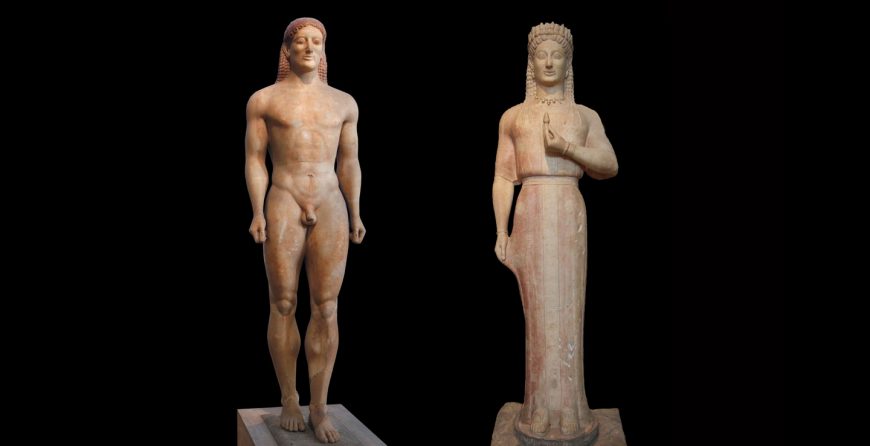
Left: Anavysos (Kroisos) Kouros, c. 530 B.C.E., marble, 6′ 4″ (National Archaeological Museum, Athens), photo: Steven Zucker Right: Aristion of Paros, Phrasikleia Kore, c. 550–540 B.C.E. Parian marble with traces of paint, 211 cm high (National Archaeological Museum, Athens), photo: Asaf Braverman CC By-NC-SA ii.0
The Classical Menses (480/479–323 B.C.E.)
Though experimentation in realistic movement began earlier the end of the Archaic Period, information technology was not until the Classical Catamenia that two- and 3-dimensional forms accomplished proportions and postures that were naturalistic. The "Early Classical Period" (480/479–450 B.C.East., also known equally the "Astringent Mode") was a flow of transition when some sculptural piece of work displayed archaizing holdovers. Every bit tin be seen in the Kritios Boy, c. 480 B.C.Due east., the "Astringent Manner" features realistic anatomy, serious expressions, pouty lips, and thick eyelids.For painters, the development of perspective and multiple ground lines enriched compositions, as can exist seen on the Niobid Painter's vase in the Louvre (epitome below).
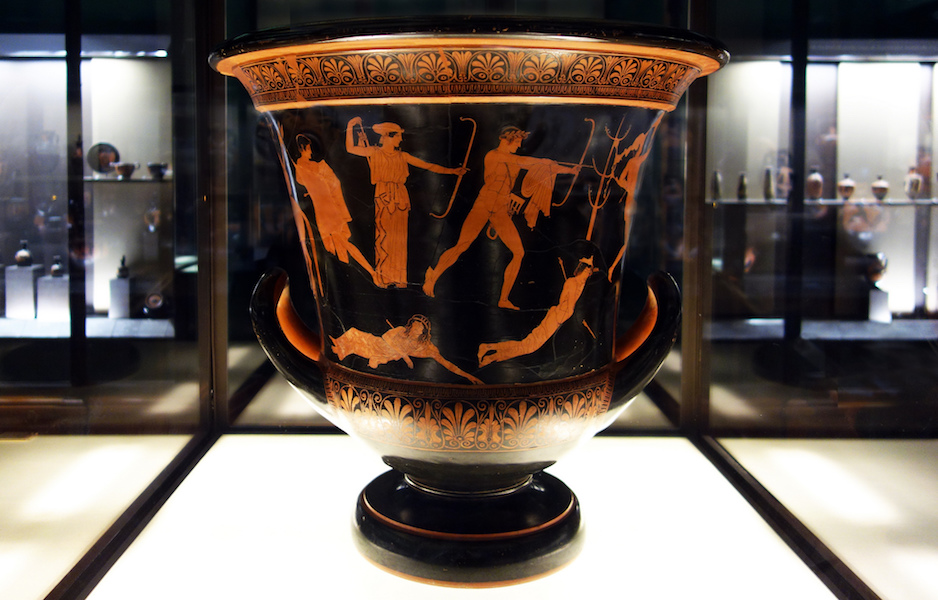
Niobid Painter, Niobid Krater, Attic red-figure calyx-krater, c. 460–50 B.C.E., 54 10 56 cm (Musée du Louvre, Paris; photo: Steven Zucker, CC Past-NC-SA ii.0)
During the "Loftier Classical Period" (450–400 B.C.E.), in that location was peachy creative success: from the innovative structures on the Acropolis to Polykleitos' visual and cerebral manifestation of idealization in his sculpture of a immature man holding a spear, theDoryphoros or "Catechism" (image below). Concurrently, yet, Athens, Sparta, and their mutual allies were embroiled in the Peloponnesian State of war, a bitter conflict that lasted for several decades and ended in 404 B.C.Eastward. Despite continued military activity throughout the "Late Classical Catamenia" (400–323 B.C.E.), artistic product and evolution continued apace. In addition to a new figural aesthetic in the fourth century known for its longer torsos and limbs, and smaller heads (for example, the Apoxyomenos), the showtime female nude was produced. Known as the Aphrodite of Knidos, c. 350 B.C.E., the sculpture pivots at the shoulders and hips into an S-Curve and stands with her right hand over her genitals in a pudica (or modest Venus) pose (encounter a Roman copy in the Capitoline Museum in Rome here). Exhibited in a circular temple and visible from all sides, the Aphrodite of Knidos became 1 of the nearly celebrated sculptures in all of antiquity.
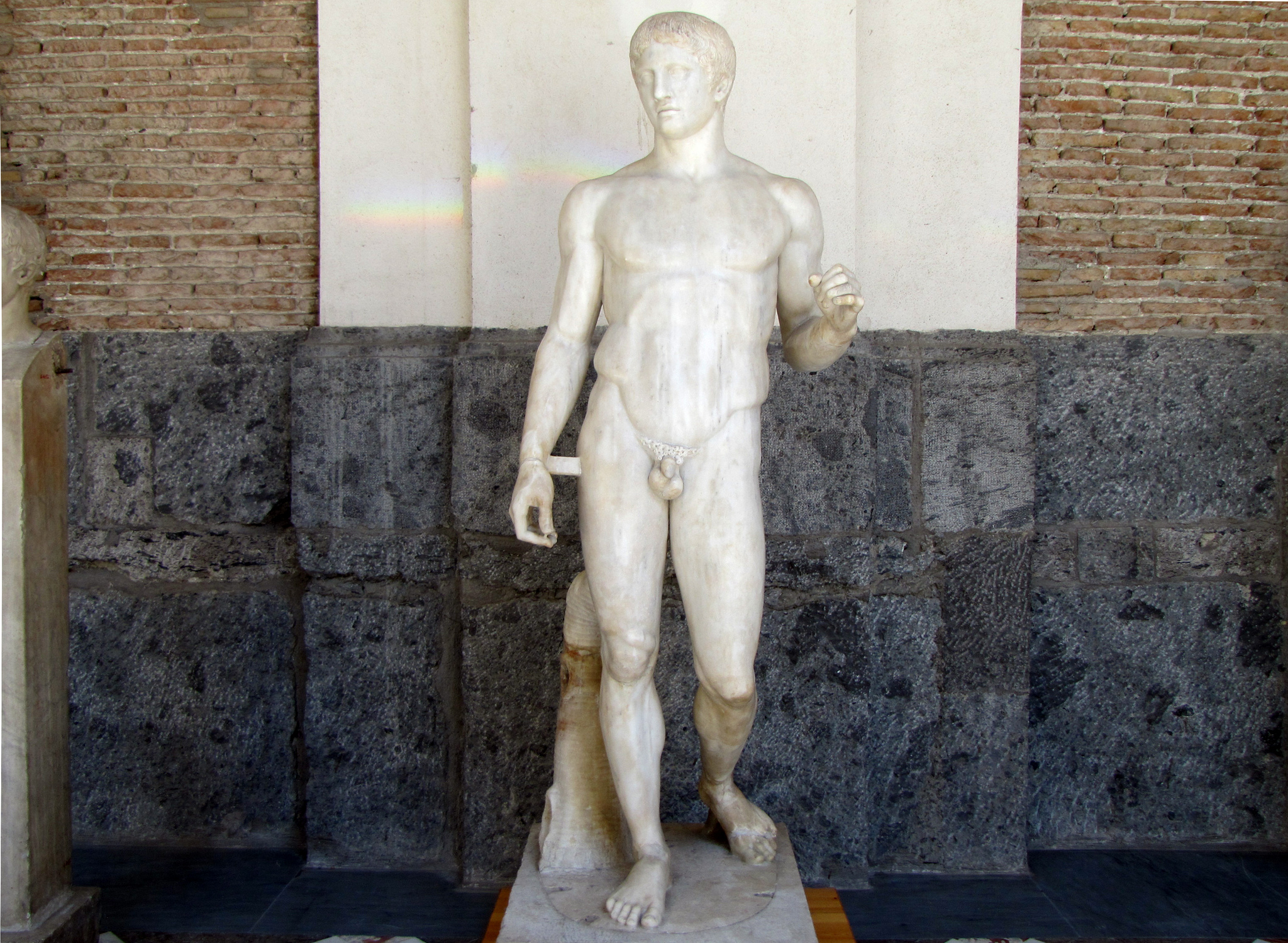
Polykleitos, Doryphoros (Spear-Bearer) or The Canon, c. 450–40 B.C.Eastward., ancient Roman marble copy found in Pompeii of the lost statuary original, 211 cm (Museo Archeologico Nazionale di Napoli; photo: Steven Zucker, CC Past-NC-SA two.0)
The Hellenistic Period and Beyond (323 B.C.East.–31 B.C.East.)
Following the death of Alexander the Great in 323 B.C.Due east., the Greeks and their influence stretched equally far east equally modern India. While some pieces intentionally mimicked the Classical style of the previous period such as Eutychides'Tyche of Antioche(Louvre), other artists were more interested in capturing motion and emotion. For example, on the Great Chantry of Zeus from Pergamon (below) expressions of agony and a confused mass of limbs convey a newfound interest in drama.
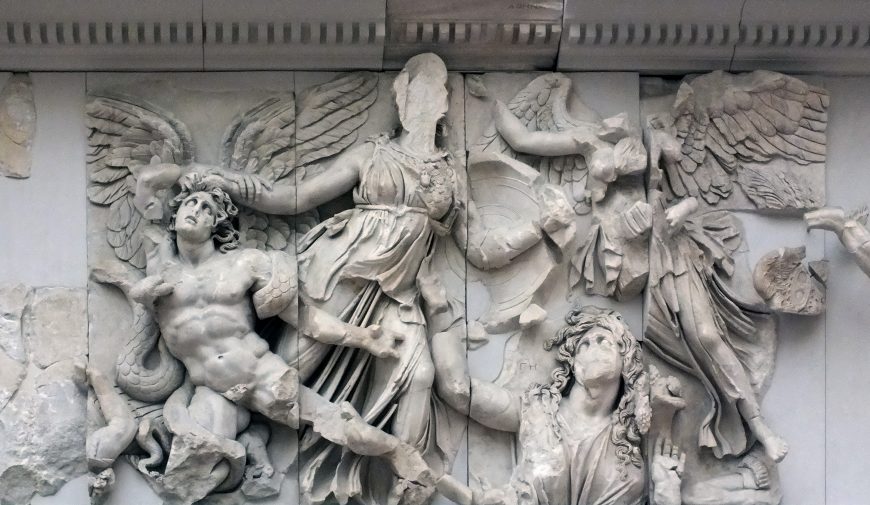
Athena defeats Alkyoneus (detail), The Pergamon Altar, c. 200–150 B.C.Due east. (Hellenistic Period), 35.64 ten 33.four meters, marble (Pergamon Museum, Berlin)
Architecturally, the scale of structures vastly increased, as can be seen with the Temple of Apollo at Didyma, and some complexes even terraced their surrounding landscape in order to create spectacular vistas as can be seem at the Sanctuary of Asklepios on Kos. Upon the defeat of Cleopatra at the Battle of Actium in 31 B.C.E., the Ptolemaic dynasty that ruled Egypt and, simultaneously, the Hellenistic Menstruum came to a close. With the Roman admiration of and predilection for Greek art and culture, however, Classical aesthetics and teachings continued to endure from antiquity to the mod era.
Boosted resources
The Art of classical Greece from the Metropolitan Museum of Fine art's Heilbrunn Timeline of Fine art History.
Greek Art in the Archaic Menstruum on the Metropolitan Museum of Art's Heilbrunn Timeline of Fine art History.
Art of the Hellenistic Age and the Hellenistic Tradition on the Metropolitan Museum of Art's Heilbrunn Timeline of Art History.
Richard T. Neer, Greek Art and Archaeology: A New History, c. 2500–c. 150 B.C.E. (Thames and Hudson, 2011).
Robin Osborne, Archaic and Classical Greek Fine art (Oxford Academy Press, 1988).
John G. Pedley, Greek Art and Archaeology (Pearson, 2011).
J.J. Pollitt, Fine art and Experience in Classical Greece (Cambridge University Press, 1972).
Nigel Jonathan Spivey, Greek Art (Phaeton Printing, 1997).
Smarthistory images for pedagogy and learning:

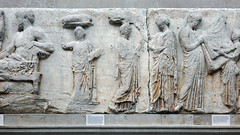
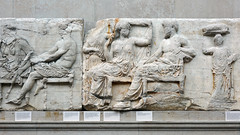
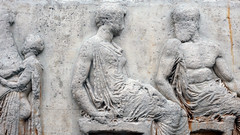
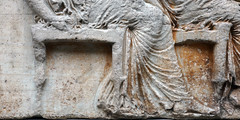

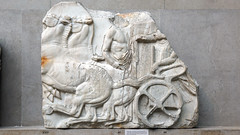

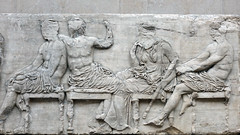
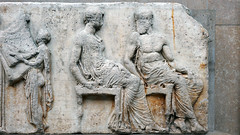
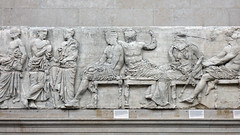

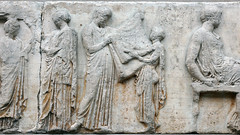
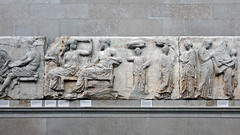
Cite this page as: Dr. Renee One thousand. Gondek, "Introduction to ancient Greek art," in Smarthistory, Baronial 14, 2016, accessed April 29, 2022, https://smarthistory.org/greek_intro/.
Publicar un comentario for "Why Is Greek Art the Pinaacle of Art History"